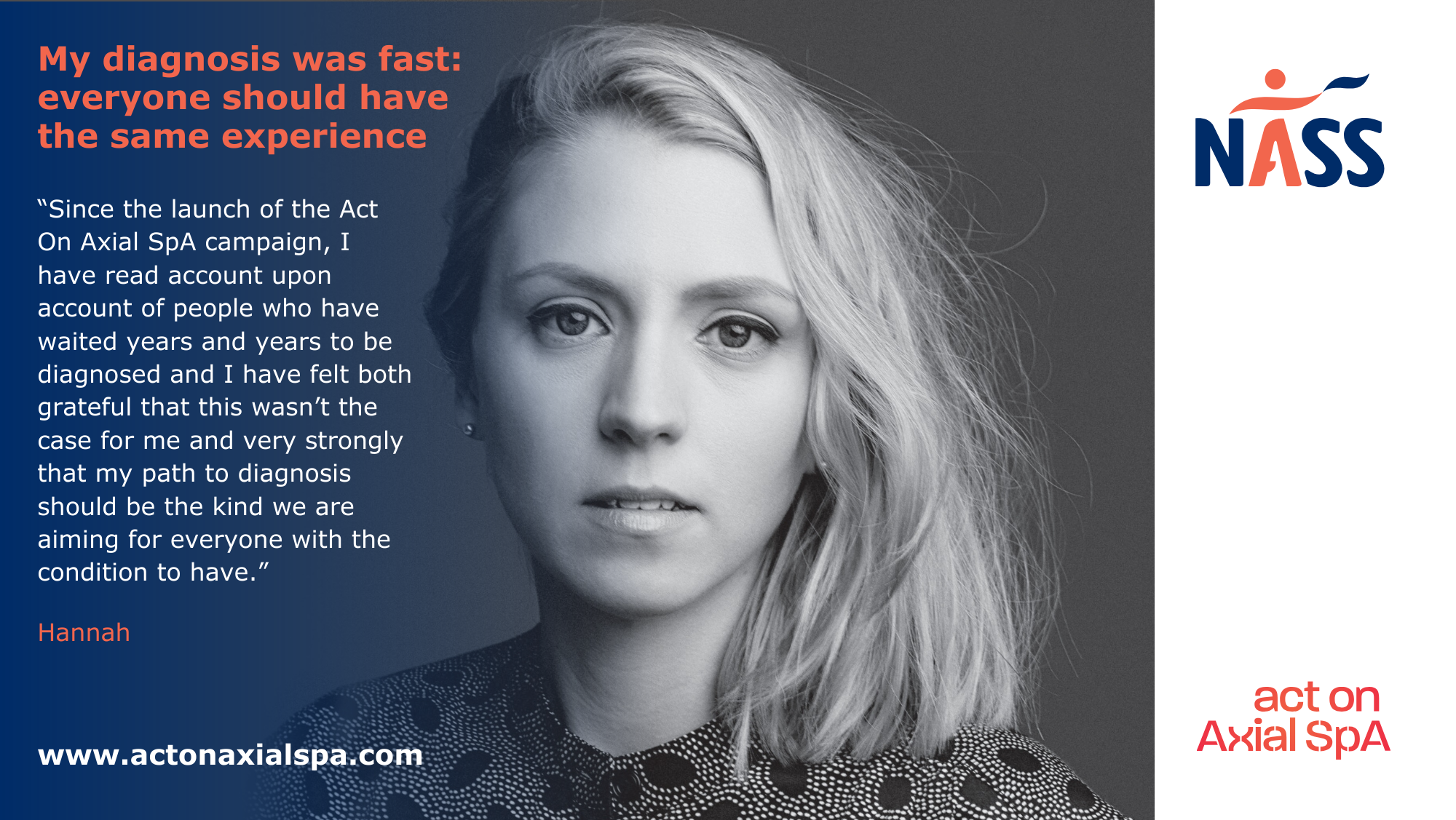
Since the launch of the Act On Axial SpA campaign, I have read account upon account of people who have waited years and years to be diagnosed and I have felt both grateful that this wasn’t the case for me and very strongly that my path to diagnosis should be the kind we are aiming for everyone with the condition to have.
I think the fact that my physical pain didn’t start until I was 31 and that it came on after a routine visit to a chiropractor helped my GP understand that it wasn’t just “growing pains” or a “sporting injury” which we hear AS sufferers being dismissed with time and time again.
I was initially diagnosed with a slipped disc and told to take naproxen, to go away and rest and to come back if it didn’t improve. It didn’t improve of course, so when I returned to my GP he sent me for a blood test. My inflammation markers were high which wouldn’t be the case with an injury so he sent me for an MRI scan which showed sacroiliitis. At this point I was referred to rheumatology and the rheumatologist I saw diagnosed AS within 15 minutes of my appointment starting. The time from initial onset of symptoms to diagnosis was just 5 months.
All this does make it sound like plain sailing but of course that year was pretty terrible. I could sometimes walk only a few steps without being in the worst pain imaginable, I had pain in multiple joints across my body, I was exhausted the whole time, I was waking up as much as ten times per night and my mood was low.
It is unthinkable however that that year could have lasted 5 years or 10 years had I not received my diagnosis so quickly. A fast diagnosis doesn’t just benefit the individual; it also benefits wider society.
I received benefits when first diagnosed and now I am well enough not to need them, well enough because I am on the right medication and am doing the things my body needs to keep the condition under control. I didn’t have to stop working because I was able to adjust my working life to fit around my condition; I knew what was wrong and what I would need longer term.

